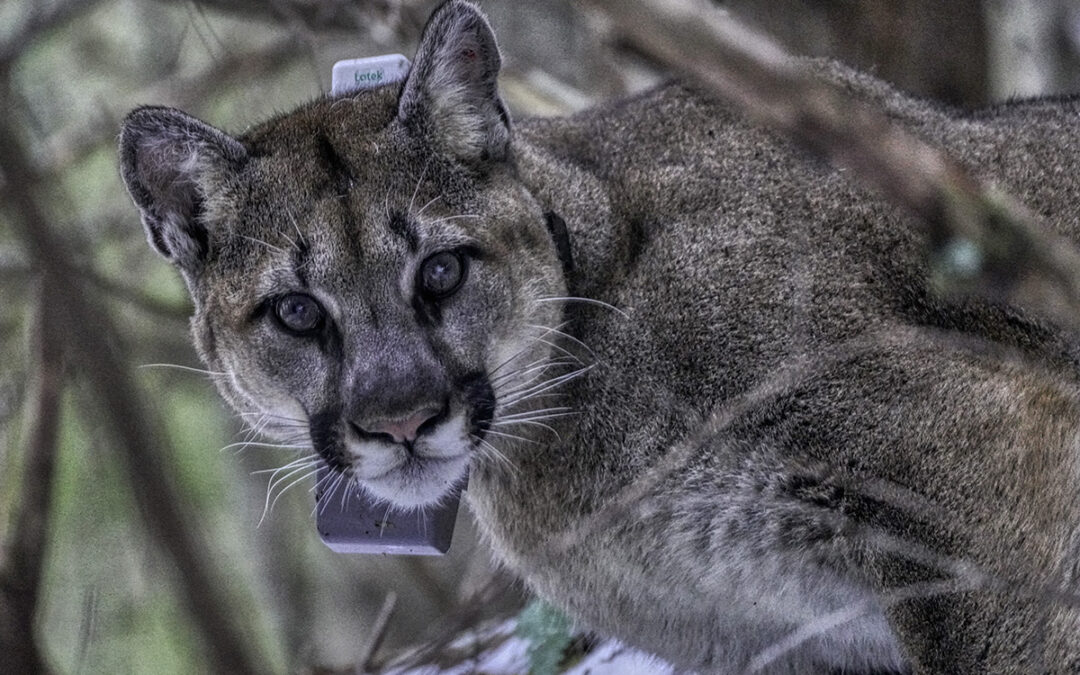PHOTO: Bjorn, a cougar being tracked by PGST’s Natural Resource’s department in partnership with the Olympic Cougar Project. Bjorn is not the cougar that was collared on Friday.
On Friday March 17, the Port Gamble S’Klallam Tribe’s (PGST’s) Natural Resources Department captured and collared a cougar (also called a mountain lion) on the PGST Reservation. The cougar was collared as a part of the Olympic Cougar Project, a large-scale research project focused on better understanding cougar population on the Olympic Peninsula. PGST and its biologists are active partners of the Olympic Cougar Project. More info on the project and its goals can be found here: https://panthera.org/blog-post/introducing-olympic-cougar-project
The cougar collared on Friday had killed, and was consuming, a goat. He is a two-year-old male. The collar is a GPS collar that allows staff to monitor the cougar’s location remotely. Staff biologists made the choice to collar and release the cougar, as opposed to killing him, because this was the cougar’s first known depredation of livestock. With a collar, staff will be able to monitor his location.
Other cougars are known to live in the area, and using the data from this captured cougar, biologists will be able to learn more about cougars in the area. At the present moment, little is known about habitat use, movement patterns, or cougar population size in northern Kitsap County.
Although there is a substantial human population in northern Kitsap County, cougars continue to live here. The presence of cougars in the area is not new and should not be cause for alarm. Residents should continue to follow WDFW’s recommendations for living with cougars, as found on WDFW’s website (link below). The section on “Preventing Conflict” is especially applicable. Owners of small livestock should be extra vigilant about bringing in their livestock at night – this could save their livestock and the life of the cougar. More info on cougars can be found here: https://wdfw.wa.gov/species-habitats/species/puma-concolor#conflict
Staff will continue to monitor this cougar’s location daily (via EarthRanger), and we can find him in person with a VHF receiver if need be. Should he continue to depredate on livestock, appropriate action will be taken.
At two years old, it is likely this cougar is in the process of dispersing, or recently finished doing so. Dispersal is the process of sub-adult animals leaving their mother and setting off to establish their own home range. This typically happens with cougars as they near sexual maturity. Males are known to travel hundreds of miles in the process of dispersing.
If you have questions or to report a sighting, please contact:
Dylan Bergman (Point No Point Treaty Council Wildlife Program Manager)
dbergman@pnptc.org
360-731-8674
OR
Cassandra Sullivan (PGST Wildlife Biologist)
claroche@pgst.nsn.us
360-621-3575
If you’re able to safely capture photo or video during a sighting, please submit to Dylan and/or Cassandra. DO NOT get too close to the cougar or put yourself in harm’s way.
Unless there is an immediate threat to human health and safety, please refrain from calling 9-1-1.

